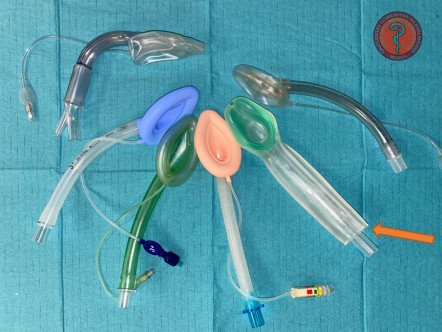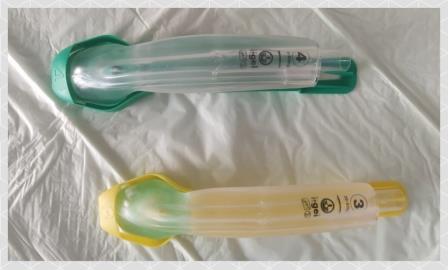Vetntilation of the patient using supraglotic device - laryngeal mask i-gelThese devices are applied to the airways without the need for direct visualization of the oral cavity and supraglottic space. Their technical implementation is relatively simple, but they are more advanced methods. The introduction of supraglottic devices requires more regular training. Different variants and types of laryngeal masks are available on the market. They differ in material, shape and the presence or absence of inflatable cuffs and drainage holes for drainage of gastric contents from the esophagus. In our conditions of pre-hospital emergency medicine, laryngeal tubes type i-Gel are the most frequently used. Other types of masks are rather used to secure airways in operating theaters. Laryngeal masks have a tip inserted into the esophagus, which partially obscures it and thus reduces the likelihood of aspiration into DC. They can be connected to artificial lung ventilation and EtCO2 sensor. The use of these aids is limited by the depth of unconsciousness. Deep unconsciousness is required for the tolerance of these devices in the supraglottic space - GCS 3b. With GCS more than 3b, it is necessary to sit the patient and use muscle relaxants optimally. It is possible to effectively introduce a laryngeal mask even after topical anesthesia of the pharynx with lidocaine spray with no need for deep sedation. In the case of superficial sedation without muscle relaxation, or topic anesthesia there is a risk of provoking a gag reflex or laryngospasm. The size of the laryngeal mask is chosen according to the patient's weight.
Different types of laryngeal masks, laryngeal mask i-gel is marked with orange arrow
Laryngeal mask i-gel |
Map: Laryngeal mask i-gel (2029)
|
||
|
Review your pathway |

